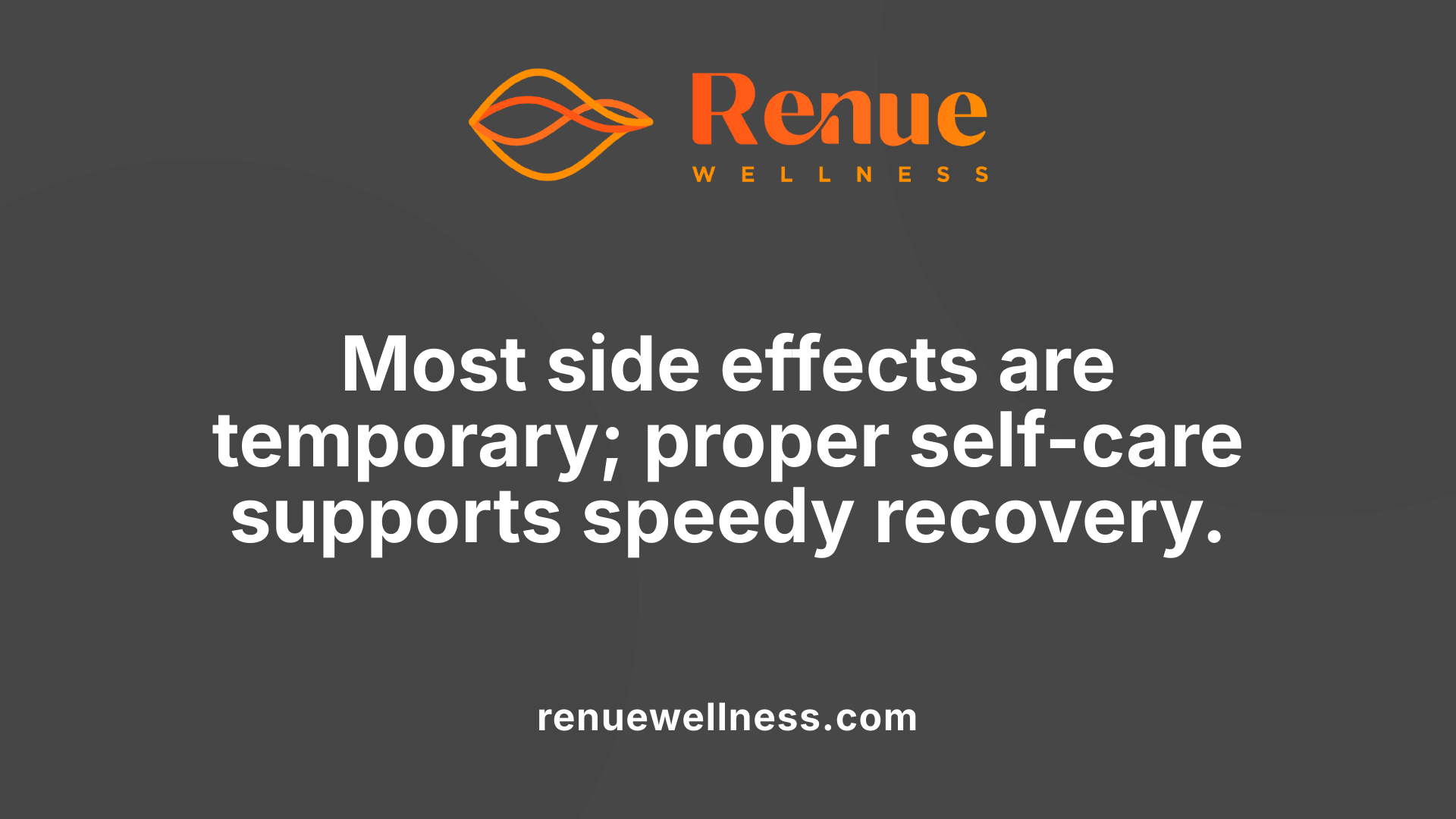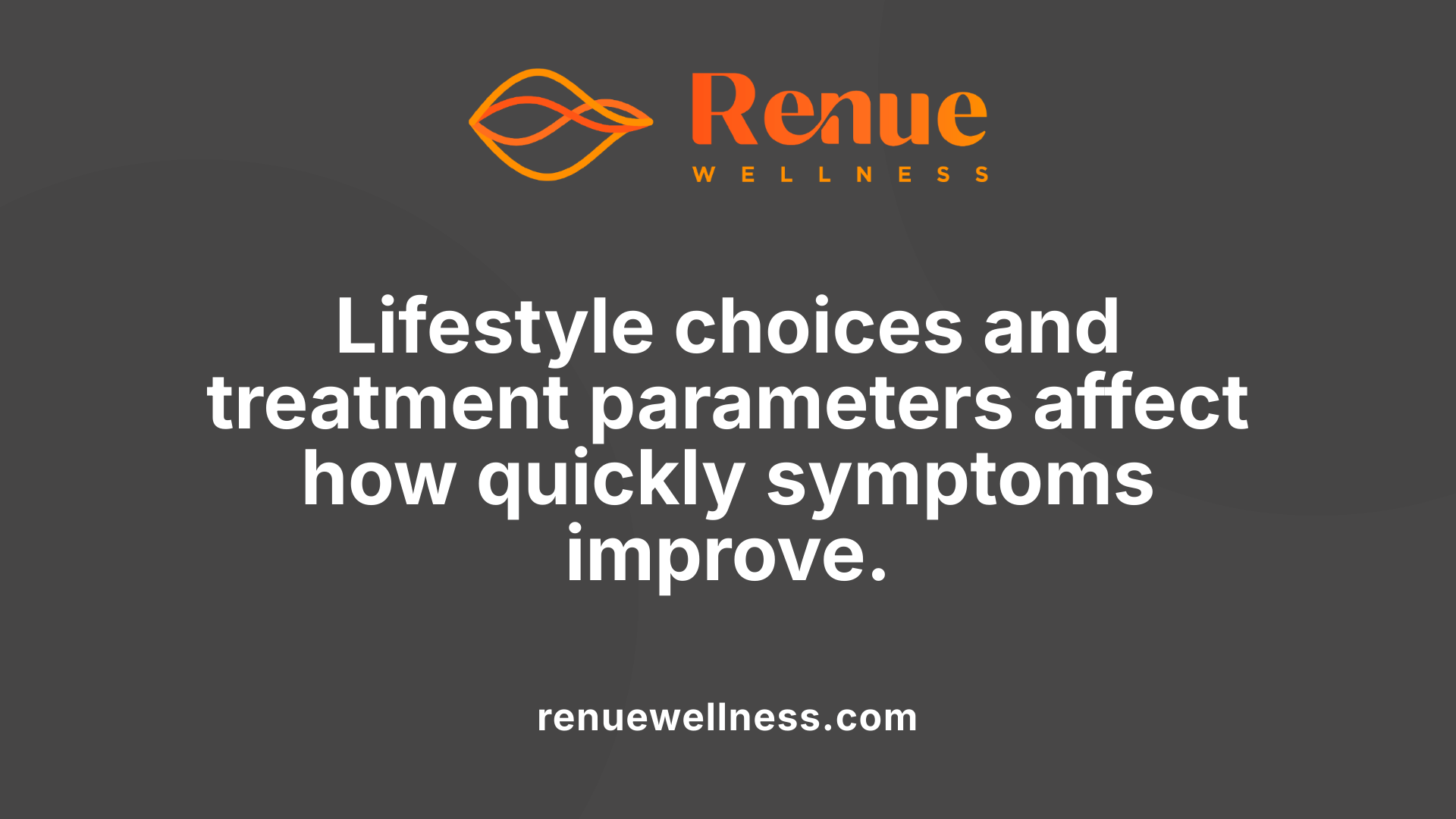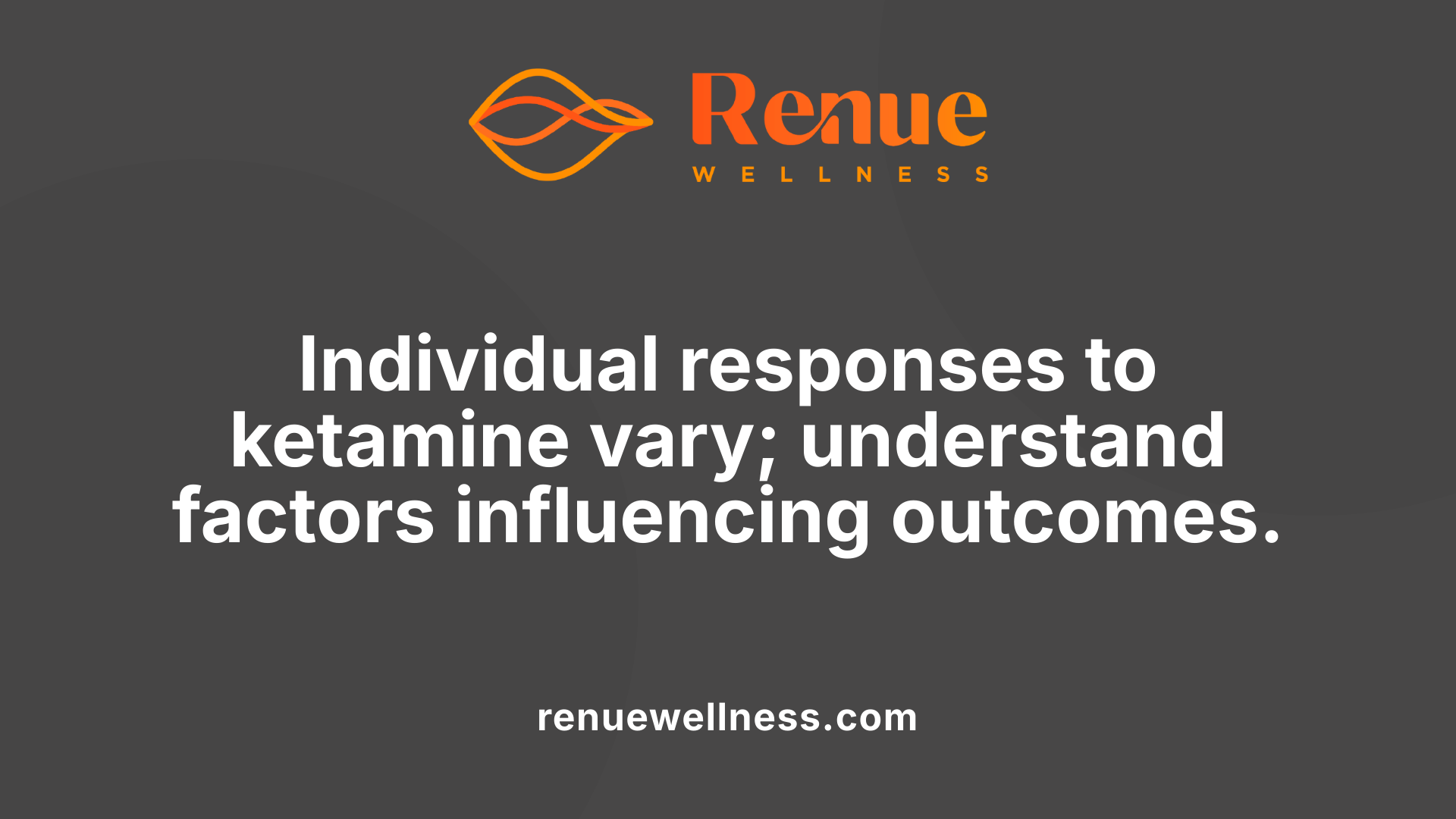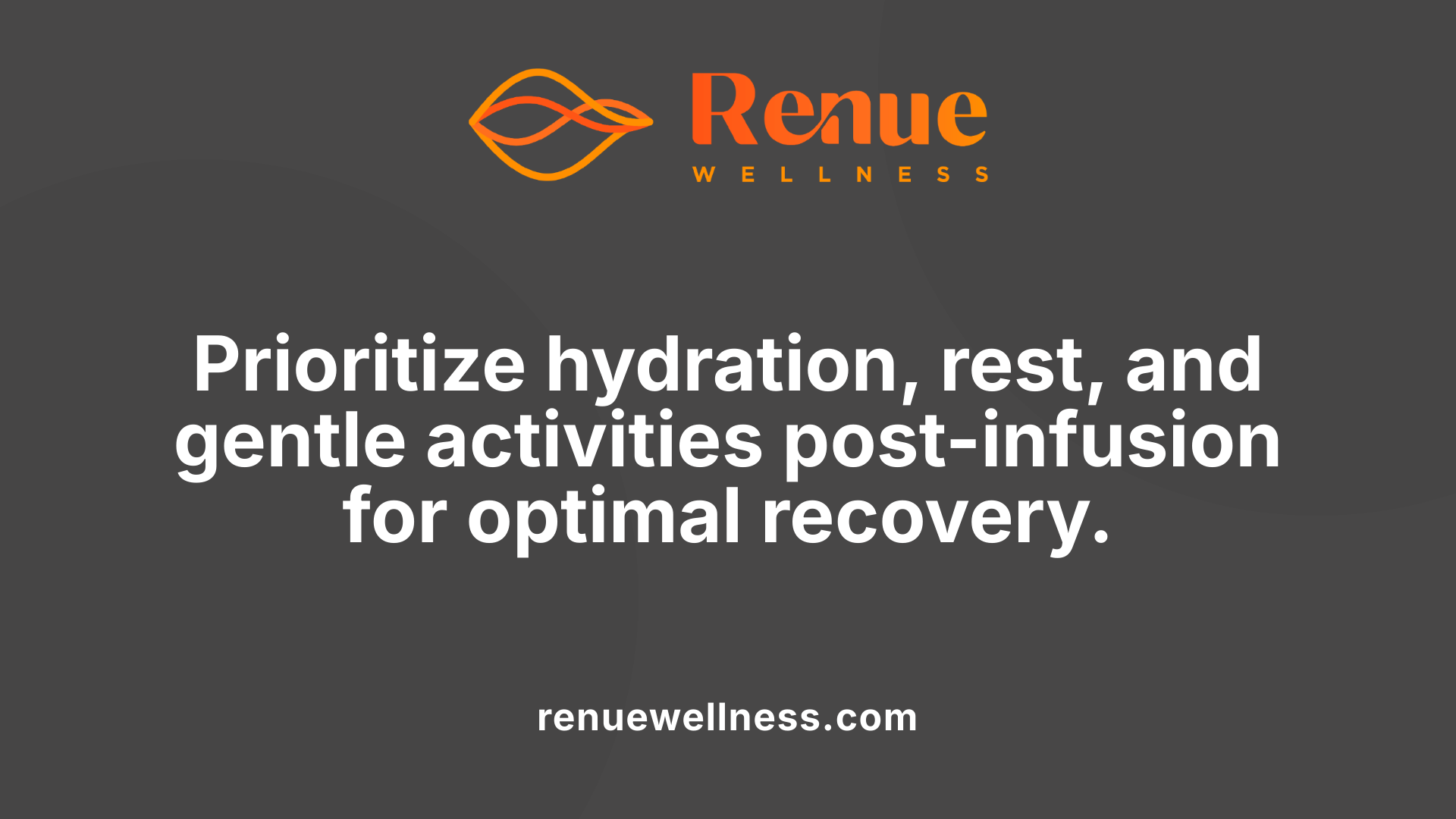How Soon Will I Feel Better After Ketamine?


July 18, 2025
Understanding the Timeline of Recovery and Symptom Relief
Ketamine therapy has gained recognition for its rapid and effective relief of depression, anxiety, and chronic pain. Patients often wonder how quickly they will start to feel better after treatment, what sensations to anticipate, and how to manage the recovery process. This article explores the typical timeline for symptom relief, effects during and after infusion, recovery expectations, and factors influencing the speed of improvement, providing a comprehensive guide for those considering or undergoing ketamine therapy.
Initial Effects During and Immediately After Ketamine Infusion
What effects and sensations can I expect during and immediately after a ketamine infusion?
Patients undergoing ketamine treatment often report a variety of sensations during the infusion process. Most commonly, individuals feel a sense of euphoria, relaxation, and often a warm, floating feeling throughout their body. There may also be an experience of disconnection from worries or negative thoughts, sometimes described as a detached or out-of-body sensation.
This dissociative state usually begins shortly after the infusion starts, typically within the first 10-15 minutes, and lasts approximately 30 to 45 minutes. During this period, thoughts and emotions can shift, and many describe feeling their mind becoming clear and uncluttered, similar to meditation.
In addition to these psychological effects, some patients experience physical sensations such as tingling, warmth, or mild dizziness. Feelings of tiredness and disorientation are common but generally temporary. It is also not unusual to feel a sense of lightness or floating, contributing to feelings of calmness.
Immediately following the procedure, side effects like dissociation and dizziness tend to diminish quickly. Many individuals notice an improvement in mood and a feeling of relaxation. However, lingering fatigue, mild headache, or nausea can persist for a few hours.
Common short-term side effects include mild headaches, nausea, increased blood pressure, and feelings of tiredness or disorientation. These effects are typically brief and resolve within a day or so. It is recommended to rest post-treatment, hydrate well, and avoid strenuous activities.
Overall, the immediate aftermath of ketamine infusion is characterized by relaxation, mental clarity, and a sense of calm, with physical sensations gradually subsiding as the drug's effects wear off.
Expected Duration and Nature of Post-Treatment Side Effects

What are common side effects like headache, nausea, and fatigue?
Many patients experience mild and temporary side effects following ketamine treatments. Headaches, nausea, and fatigue are among the most reported and usually resolve within a day or two. Some individuals also feel dizzy or disoriented immediately after the infusion, but these effects generally diminish quickly.
What are normal recovery symptoms?
In addition to the common side effects, patients often feel tired, groggy, or disoriented for a few hours following the procedure. Some might experience lingering feelings of dissociation, out-of-body sensations, or a sense of calm that can last from 30 to 40 minutes. Fatigue and mental cloudiness are typical as the brain adjusts to the neurochemical changes induced by ketamine.
How can I manage post-infusion discomfort?
To ease recovery, it is best to rest and avoid strenuous activities immediately afterward. Staying well-hydrated and eating light, balanced meals can help mitigate nausea. Engaging in relaxing activities, such as gentle walking or mindfulness exercises, may promote recovery. It’s advisable to avoid alcohol and recreational drugs, which can interfere with the treatment's effectiveness and your overall mental health.
Can I sleep comfortably after a ketamine infusion?
Although fatigue and grogginess are common, many find that ketamine's effects can influence sleep positively. It tends to increase deep sleep phases early in the nights following treatment, supporting mood improvements. However, ketamine may also reduce REM and slow-wave sleep, leading to possible sleep disturbances in some individuals.
Creating a comfortable sleep environment, prioritizing rest, staying hydrated, and practicing relaxation techniques can facilitate good sleep quality. If sleep issues or excessive tiredness persist beyond a few days, it is recommended to consult your healthcare provider for personalized guidance.
In summary, post-treatment side effects are generally mild and manageable. Most patients recover quickly, and proper self-care can ensure a smoother transition back to daily activities.
Timeline to Noticeable Improvements in Symptoms
How soon do patients see results after ketamine infusions?
Many patients experience rapid improvements in depressive symptoms soon after their ketamine treatments. In fact, some report feeling better within hours, even before the infusion ends, due to the immediate neurochemical effects of the medication.
Most people notice positive changes within the first 24 hours, with the peak of benefits typically occurring around this time. Improvements often include mood elevation, reduced feelings of sadness or hopelessness, and a greater sense of calm and clarity.
What is the difference between immediate and long-term effects?
The immediate effects of ketamine are usually short-lived, lasting from 30 minutes to a few hours. These include feelings of dissociation, mild euphoria, relaxation, and sometimes tiredness or disorientation. These sensations are temporary and tend to diminish quickly.
In contrast, long-term outcomes develop over multiple sessions and can extend for weeks or months. Repeated treatments can lead to sustained relief from depressive symptoms, neuroplasticity enhancements, and emotional regulation improvements. The full therapeutic benefits often become apparent after completing a series of treatments, usually around the fifth or sixth infusion.
How does the number of treatment sessions influence symptom relief?
The response to ketamine treatment varies widely. Some patients experience significant symptom improvements after just one session, while others may require several treatments to notice meaningful change.
Typically, a structured treatment plan involves multiple infusions over several weeks. Most patients start to observe more noticeable and lasting improvements after their third or fourth session. The full benefits tend to manifest after completing the complete series, often around the fifth or sixth infusion.
Continued or maintenance therapy, such as booster infusions, can help prolong the positive effects. Therefore, the number of sessions and ongoing care are tailored to individual needs, optimizing both immediate relief and long-term stability.
| Aspect | Typical Timeframe | Additional Notes |
|---|---|---|
| Rapid symptom relief | Within hours to days | Some patients feel effects almost immediately |
| Peak benefits | 24 hours after infusion | Mood improvements often reach their highest point |
| Long-term improvements | After multiple sessions over weeks | Sustained benefits may last months with ongoing treatment |
| Maintenance therapy | Every 3-4 weeks | Helps prolong symptom relief |
Understanding this timeline helps set realistic expectations and reinforces the importance of adherence to the prescribed treatment plan to achieve the best possible outcomes.
Long-Term Outcomes and Maintenance of Benefits

What is the typical timeline for symptom relief after ketamine treatment?
Most patients begin to notice improvements within hours to a few days following their ketamine infusions. The initial positive effects, such as mood elevation and reduced depressive symptoms, often peak around 24 hours after treatment. For some, relief can be immediate even before the infusion ends, especially after the first session.
However, the duration of these benefits varies widely among individuals. While some may experience relief lasting a week or more, others might see effects diminish after a few days. To achieve sustained and more noticeable improvements, a series of infusions—commonly six—over two to three weeks is typically recommended.
Long-term outcomes often depend on ongoing follow-up care. Continuous therapy, including monthly booster sessions or treatments as needed, can prolong benefits. Once the initial series is completed, many patients report feeling significantly better for three to four months or longer, especially when combined with supportive therapies like psychotherapy or mindfulness practices.
This gradual and sustained improvement highlights the importance of a comprehensive treatment plan that extends beyond the initial infusions. Regular assessments and tailored booster treatments keep the therapeutic gains aligned with individual needs, leading to enduring mood stabilization and emotional health.
Factors Influencing Speed of Recovery and Symptom Improvement

How soon might I experience relief from conditions like depression or anxiety following ketamine therapy?
Relief from depression and anxiety symptoms can often be experienced quite rapidly, frequently within 24 to 72 hours following initial treatment. Some individuals notice significant symptom reduction shortly after their first infusion, with benefits possibly lasting several days.
The timing and extent of improvement depend on several factors. These include the dose and frequency of infusions, as well as the individual’s unique neurobiology and response to the medication.
Lifestyle choices also play a role. Substance use such as alcohol or recreational drugs can interfere with the therapy's effectiveness and slow down recovery.
While some patients might feel better almost immediately, others need multiple sessions over weeks to achieve sustained relief.
In general, many find noticeable improvement within the first few days after treatment, with ongoing sessions helping to maintain or enhance these benefits. Individual response varies widely, making personalized treatment plans important for optimal results.
Managing Expectations and Understanding Variability of Results

How do individual differences affect the outcomes of ketamine therapy?
Responses to ketamine treatment can vary widely among patients. Factors such as genetics, personal health history, coexisting conditions, and lifestyle choices like drug or alcohol use influence how quickly and effectively one might respond to therapy. Some people experience significant mood improvements after just one session, while others may require multiple treatments over time to notice substantial benefits.
What is the effect of multiple sessions?
For many patients, repeated infusions over weeks can lead to more sustained and profound improvements in symptoms. The full benefits often become apparent after several sessions—commonly after the third or fourth treatment—and can last for months or longer. Regular maintenance, including booster infusions, can help prolong the positive effects and prevent symptom relapse.
Can symptoms temporarily worsen or emotional lows occur?
In some cases, patients might encounter temporary emotional lows or a feeling of being worse before feeling better. This can happen within days after treatment, especially as the mind processes deep-seated emotions. Occasional feelings of sadness, fatigue, or mood swings are part of this process and usually resolve quickly.
| Effect | Typical Duration | Additional Notes |
|---|---|---|
| Temporary emotional lows | A few hours to a few days | Can include feelings of sadness or emotional vulnerability |
| Symptom improvement onset | Hours to days | Most report relief within this period |
| Long-term benefits | Weeks to months | Often requires multiple sessions for sustained effect |
| Post-treatment tiredness | Up to 48 hours or more | Managing rest, hydration, and avoiding alcohol can help |
What should I do if I experience prolonged or worsening symptoms?
If feelings of sadness, emotional lows, or other side effects persist beyond the expected timeframe or worsen, contacting your healthcare provider is crucial. They can evaluate your situation, adjust your treatment plan, or offer additional support. Remember, while some emotional fluctuation is normal, ongoing distress warrants professional guidance.
Understanding that everyone's response varies is vital for managing expectations. The goal is to reach a balanced and stable emotional state, with ongoing care helping to integrate the therapy’s benefits into daily life.
Post-Treatment Care and Lifestyle Recommendations
 After a ketamine infusion, proper care is essential to maximize benefits and ensure a smooth recovery. One of the most important aspects is hydration and rest. Drinking plenty of fluids helps flush out the medication and supports overall recovery, while getting ample rest allows the body and mind to process the effects of the treatment.
After a ketamine infusion, proper care is essential to maximize benefits and ensure a smooth recovery. One of the most important aspects is hydration and rest. Drinking plenty of fluids helps flush out the medication and supports overall recovery, while getting ample rest allows the body and mind to process the effects of the treatment.
It is crucial to avoid activities that require full alertness, such as driving, operating heavy machinery, or engaging in strenuous exercise, for at least 24 hours. These activities can be dangerous due to lingering side effects like dizziness, disorientation, or fatigue. Patients are advised to keep their schedule light and focus on self-care.
Eating a light, balanced meal after the session can help prevent nausea and stabilize blood sugar levels. Additionally, alcohol and recreational drugs should be avoided for at least 48 hours, as they can interfere with the treatment response and increase the risk of adverse effects.
Engaging in mindfulness practices, such as meditation, deep breathing exercises, or gentle yoga, can promote emotional stability and help integrate the experience. Some patients find that therapy sessions or journaling shortly after treatment support processing any emotional shifts or reflections.
Maintaining ongoing psychiatric support or support groups can reinforce the positive changes and address any emotional or mental health challenges that may arise after treatment. Overall, prioritizing rest, hydration, and gentle activities creates an optimal environment for recovery and long-term benefits.
Achieving and Sustaining the Benefits of Ketamine Therapy
While the timeline for feeling better after ketamine treatment varies among individuals, many report experiencing significant symptom relief within days. Immediate effects often include feelings of calmness, euphoria, and dissociation, with side effects such as fatigue and dizziness typically resolving quickly. The neuroplastic changes initiated by ketamine support ongoing emotional and cognitive improvements, especially when coupled with proper self-care, therapy, and lifestyle modifications. Understanding the recovery process and managing expectations can enhance the overall therapeutic experience, ensuring sustained benefits over time. With appropriate follow-up and support, patients can maximize the positive outcomes of ketamine therapy and enjoy a better quality of life.
References
- What to Expect After Ketamine Infusion Treatment Sessions
- What to Expect After Ketamine Treatment for Depression
- How Long Does It Take to Recover After My Ketamine Infusion?
- Understanding Tiredness After Ketamine Therapy - Alchemy Wellness
- How Will I feel During and After Ketamine Treatments?
- Ketamine Therapy Timeline: How Long Should You Wait for Relief?
- What is Ketamine Therapy? - Pacific Neuroscience Institute
Recent Posts
Conditions Treated
AnxietyDepressionOCDPTSDPostpartum DepressionPain ManagementSubstance AbuseSuicidal IdeationOur Location


